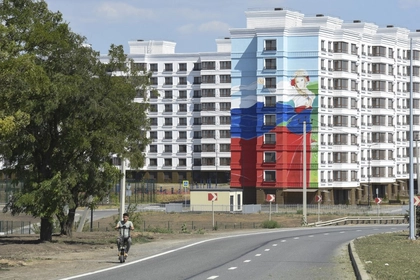This week Viktor Orban, the prime minister of Hungary, sought to black ball Ukraine’s bid to formally start EU accession talks, arguing that Ukraine was simply not ready. Ultimately, the other 26 EU member states decided to ignore Orban’s protestations and formally agreed to the start of accession talks with Ukraine. That was absolutely the right thing to do.
Hungary was itself given the green light to begin EU accession talks in 1998 after the Treaty of Copenhagen was signed in 1994, setting the requirements for accession for a bevvy of former Communist states, including Hungary. Subsequently, Copenhagen - the formal green light for accession - and eventual full membership for Hungary in 2004 provided a powerful anchor for reform and rapid economic development. It is this same powerful reform and development drive that Ukraine now so craves.
JOIN US ON TELEGRAM
Follow our coverage of the war on the @Kyivpost_official.
For the period since independence, Ukraine has lacked this accession, reform, anchor, which largely explains its under-development since compared to the likes of Hungary, Poland et al. Note back in 89/91 all had very similar starting points - Ukraine could well have achieved what Hungary, and even former Soviet states like the Baltic Republics, had it had the same EU accession anchor. Ukrainians knew this which is why they revolted twice - Orange Revolution and Euromaydan - and are arguably fighting now to cling on to that European goal.

IMF Approves $1.1 Billion Loan Disbursement to Ukraine Before Trump Inauguration
In the 1990s I was an economist researching the transtion from plan to market, visiting Hungary and indeed the region many times back then, living and breathing the transition. I don’t remember back then that Hungary was in a particularly stellar situation (SOEs were in collapse, institutions were weak, corruption rife), and indeed my take was that the decision to green light accession talks with Hungary was more a political decision. I don’t sense that it was any better ready then than Ukraine is today.
But how did Hungary’s macro position look back in 1994-1998, and how does that compare to Ukraine now, or even perhaps fairer to Ukraine, in 2021 just prior to Russia’s invasion of Ukraine?
Per capita GDP for Hungary in 1994 stood at $4170, rising to $4591 by 1998, as per IMF WEO data. In purchase power parity at 2017 dollar prices, the numbers were $16,368 and then $18,125. Again, according to the IMF, for Ukraine for 2021 just prior to the invasion per capita dollar GDP at exchange rate measures around $4874, rising to $5224 this year. At PPP on the same basis of comparison the numbers for both years were just over $13,075 and $11,684 respectively. Thus at exchange rate, Ukraine is wealthier now than Hungary in 1994-1998, but poorer on a PPP comparison. We can argue which is a better measure.
Inflation in Hungary averaged 18.9% in 1994, falling to 14.2% in 1998. In Ukraine inflation stood at around 10% in 2021, just prior to the invasion, and only 5.1% as of October 2023. Ukraine is better placed on the inflation front.
Hungary ran a budget deficit of close to 9% in 1994, moderating to 7.4% in 1998 having itself been forced into an IMF programme in 1996. Ukraine ran a budget deficit below 4% of GDP in 2021 and while it is now close to 20% of GDP much of this is due to massively increased defence spending and hence no fault of its own.
The public sector debt to GDP ratio in Hungary was close to 90% in 1994, moderating to 60% in 1998 but still way above the Maastricht 40% threshold. In 2021 Ukraine ran a public sector debt to GDP ratio of less than 49% and on trend before the war to hit the Maastricht threshold over the medium term had war not hit - years before Hungary which to this day has a public debt to GDP ratio fifty percent higher than the Maastricht criteria. Ukraine, even after the invasion, this year has a public sector to GDP ratio comparable to that of Hungary in 1994, actually lower at sub-80%.
I would argue from a public finance management perspective, that Ukraine is better prepared now than Hungary was in 1994-1998. Institutionally it is much stronger - and note Hungary then suffered a further twin crisis after the GFC and election pork barrelling in the run up to 2010.
Hungary ran a current account deficit of 11.7% of GDP in 1994, moderating to a still enlarged 7.1% in 1998. In 2021, Ukraine ran a current account deficit of just 1.6% of GDP, much better than Hungary in the period above. Even this year, according to the IMF, Ukraine’s current account deficit is expected to be less than 6% of GDP. Ukraine does now have huge external financing needs but again because of invasion, and no fault of its own.
Hungary had just over $5bn in FX reserves in 1994, and just under $9bn in 1998. In 2021 Ukraine had around $30bn in FX reserves, and these have since risen to around $40bn, again multiples better than Hungary in the period 1994-1998.
I would add herein that over the past twenty five years, most of which Orban has been in power, Hungary has benefitted from huge EU structural fund “handouts”. In the latest budget cycle they amount to around EUR5bn a year all told. That’s around EUR500 per capita, per year. In the run up to the invasion, Ukraine received at most EUR1bn a year, if that, equivalent to $25 per head. Orban’s governments have gorged at the EU trough for years. Ukraine much less so.
As above, on macro performance it is hard for Orban to back his claims with facts that Ukraine is less prepared now than Hungary was in 1998 to begin accession talks. Actually on many counts Ukraine scores better.
What about corruption?
Well Ukraine ranks 116 out of 180 countries on Transparency Corruption Perception Index. Hungary admittedly scores 77, but that is the worst in the EU - despite huge EU fund handouts as above. And therein while Ukraine has been on an improving trajectory for the past decade around corruption issues (scores improved by ten points) - Hungary has been on a deteriorating trend (score’s deteriorating by a similar amount). Hungary is getting more corrupt, while Ukraine less so.
So Orban is talking dribble. His agenda seems to be to keep Ukraine out of the EU for other reasons - perhaps to please friends in the Kremlin. Or is his agenda something else/connected? By keeping Ukraine impoverished and underdeveloped, vulnerable from invasion from Russia, does this play to a longer term goal of Orban to incorporate Ukrainian territory inhabited by ethnic Hungarians? A Russian victory in Ukraine might help facilitate this. If true, a Greater Hungary agenda would threaten neighbouring states also with large ethnic Hungarian minorities - Serbia, Romania, Slovakia, Croatia, Slovenia, even Austria. Such grand designs by Orban would indeed be a huge threat to peace and security across the whole of Europe and would sit uncomfortably with Hungary’s EU and NATO memberships.
Reprinted from @tashecon blog. See the original here.
The views expressed in this opinion article are the author’s and not necessarily those of Kyiv Post.
You can also highlight the text and press Ctrl + Enter






